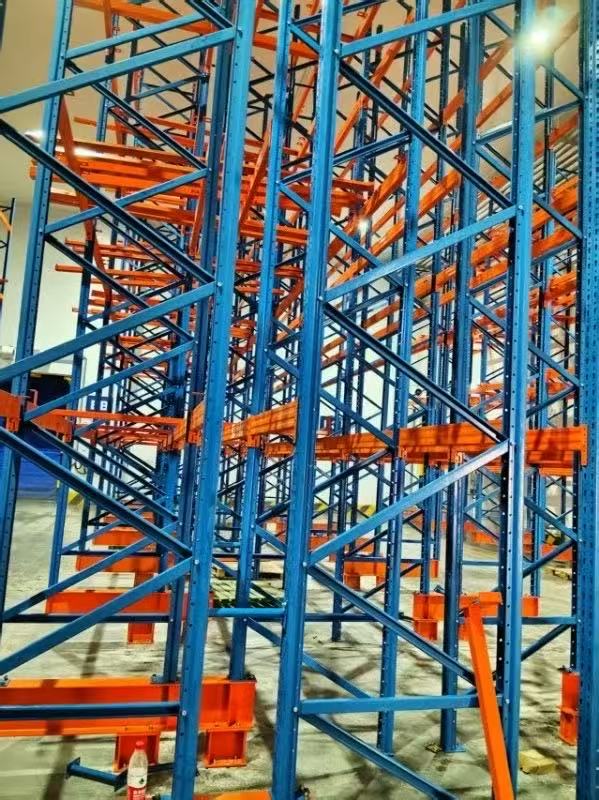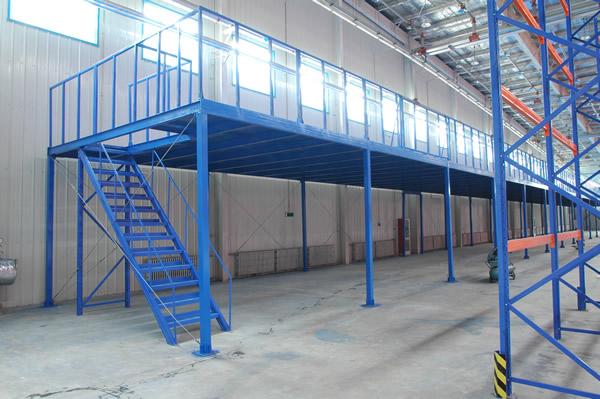In the world of logistics, warehousing, and supply chain management, storage is the backbone. At the heart of an efficient, safe, and scalable storage system are the structural racks that hold everything together—literally. Choosing the right structural rack manufacturers is not merely a procurement decision; it's a long-term strategic investment in the safety of your workforce, the protection of your inventory, and the overall productivity of your operations. Not all manufacturers are created equal, and the differences can have profound implications. This comprehensive guide will walk you through ten critical aspects you must consider when evaluating structural rack manufacturers, ensuring you partner with a provider that delivers reliability, safety, and value.

Before diving into the selection criteria, it's essential to understand what sets structural rack manufacturers apart. Unlike simple shelving units, structural racking systems are engineered structures designed to bear immense loads, often reaching tens of thousands of pounds. These manufacturers specialize in designing, engineering, fabricating, and sometimes installing heavy-duty storage systems primarily made from structural steel components.
The core products from these structural rack manufacturers often include:
Selective Pallet Racking: The most common system, allowing direct access to every pallet.
Drive-In/Drive-Thru Racking: High-density systems for storing large quantities of similar products.
Push-Back Racking: A dynamic system where pallets are stored on nested carts on an incline.
Cantilever Racking: Ideal for long, bulky items like lumber, piping, or furniture.
Pallet Flow Racking: A high-density, first-in-first-out (FIFO) system using gravity rollers.
These structural rack manufacturers provide the literal framework upon which modern supply chains are built, making their role indispensable.
This is arguably the most critical factor. The engineering behind a racking system determines its safety, capacity, and stability. Reputable structural rack manufacturers employ teams of professional engineers who use sophisticated software to design systems tailored to your specific needs.
Key engineering considerations include:
Seismic and Wind Load Calculations: For facilities in active seismic zones or with specific building codes, the rack must be designed to withstand these forces.
Load Capacity and Deflection Limits: Engineers calculate the maximum permissible load for each beam and upright frame, ensuring they do not deflect beyond safe limits.
Compliance with Industry Standards: Top-tier structural rack manufacturers adhere to stringent standards. In North America, the most important is the Rack Manufacturers Institute (RMI) standard, particularly ANSI/RMI MH16.1. Compliance with this standard is a non-negotiable mark of quality and safety.
Site-Specific Design: A quality manufacturer will never offer a one-size-fits-all solution. They consider your floor condition, ceiling height, forklift types, and inventory profile.
Choosing a manufacturer with weak engineering credentials is a significant safety risk that can lead to catastrophic failures.

The raw materials and fabrication processes used by structural rack manufacturers directly impact the durability and longevity of the racking system. Inferior steel or poor manufacturing can lead to premature wear, failure, and safety hazards.
When evaluating manufacturers, inquire about:
Steel Grade and Sourcing: High-strength, commercial-quality steel is a must. The best structural rack manufacturers are transparent about the grade and source of their steel.
Forming and Fabrication: Look for manufacturers using state-of-the-art roll-forming machines and robotic welding. This ensures consistent, high-quality components with precise tolerances.
Finishing and Coating: The finish protects the steel from corrosion, which is crucial in environments with humidity or temperature fluctuations. Powder coating is a superior method compared to simple paint, offering a more durable and uniform finish. The process often involves pre-treatment, phosphating, and electrostatic application cured in an oven.
A manufacturer that controls its material supply and manufacturing process from start to finish typically delivers a more reliable product.
Trust, but verify. Leading structural rack manufacturers don't just claim their products are strong; they prove it through rigorous independent testing. This provides an unbiased validation of their engineering calculations and manufacturing quality.
Look for evidence of:
Independent Third-Party Testing: Components, especially beams and connectors, should be tested by accredited independent labs to verify their load capacities and structural integrity.
Quality Management Certifications: Certifications like ISO 9001 demonstrate that the manufacturer has a documented and consistently applied quality management system throughout their operations.
Traceability: Reputable structural rack manufacturers can trace materials back to their source and provide mill certificates for the steel used. This is crucial for accountability and quality assurance.
A manufacturer that is open about its testing and certification processes is one that stands behind its products with confidence.
The best structural rack manufacturers offer more than just selling components. They provide a full-service solution that guides you from concept to completion. This end-to-end service is invaluable for ensuring the system is installed correctly and performs as designed.
A full-service offering typically includes:
Initial Consultation and Site Assessment: An expert will visit your facility to understand your workflow, challenges, and goals.
Custom CAD Design and Layout: They will provide detailed layout drawings and 3D renderings, allowing you to visualize the final system.
Project Management: They coordinate the entire project timeline, from manufacturing to delivery.
Professional Installation: Many top structural rack manufacturers have certified installation teams or vetted partners. Proper installation is critical; an incorrectly installed rack is a dangerous rack.
Post-Installation Services: This includes providing "as-built" drawings, load application and rack configuration plaques, and initial safety inspections.
Opting for a manufacturer that handles the entire project reduces complexity, minimizes errors, and ensures a single point of accountability.
No two warehouses are identical. Your storage needs are unique, and the ability of structural rack manufacturers to customize their solutions is a significant advantage. Standard systems might work for some, but custom engineering can often unlock hidden storage density and improve operational flow.
Consider a manufacturer's ability to provide:
Non-Standard Sizes and Configurations: Can they accommodate unusual ceiling heights, column placements, or floor slopes?
Integration with Other Systems: The best racking systems work in harmony with mezzanines, conveyor systems, and warehouse management software (WMS). Leading structural rack manufacturers can design for this integration.
Specialty Attachments and Accessories: From wire mesh decking and pallet supports to special safety guards, the availability of a wide range of accessories indicates a flexible and solution-oriented provider.
Your storage needs will evolve. Partnering with a manufacturer that offers flexible, customizable solutions ensures your investment can adapt with you.
Safety must be paramount in any industrial setting. Structural rack manufacturers have a responsibility to design and produce systems that prioritize the safety of personnel and inventory. Furthermore, they should provide solutions to mitigate the most common cause of rack failure: forklift impact.
Key safety features to look for:
Integrated Safety Locks: Beam connectors should have positive locks that prevent dislodgement from accidental impact.
Column Guards and Upright Protectors: These are essential accessories that absorb the energy of a forklift impact, protecting the critical upright frames from damage.
Robust Footplates and Anchoring: The entire system must be securely anchored to the floor according to the engineer's specifications to prevent tipping.
Clear Safety Signage and Documentation: The manufacturer should provide clear labels indicating load capacities and configuration rules.
A manufacturer that emphasizes safety in its design and educates its customers on proper use is a true partner in risk management.
The relationship with your structural rack manufacturers should not end once the check is cleared. Ongoing support is crucial for the long-term health of your storage system. Downtime in a warehouse is incredibly costly, and having reliable support is key to minimizing it.
Evaluate their after-sales program:
Parts Availability and Lead Times: How quickly can they ship a replacement beam or upright if one is damaged?
Technical Support: Is there a dedicated team you can call with technical or safety questions?
Maintenance and Inspection Services: Do they offer periodic inspection services to identify wear, damage, or overloading before it becomes a critical issue?
Operator Training: Some manufacturers provide training materials or sessions for your forklift operators on how to interact safely with the racking system.
A manufacturer committed to after-sales support demonstrates a long-term commitment to your success and safety.
While upfront cost is always a consideration, it should never be the sole deciding factor when dealing with critical infrastructure. The cheapest quote from unknown structural rack manufacturers can often be the most expensive choice in the long run due to safety incidents, premature replacement, or inefficient operations.
A true value analysis considers:
Total Cost of Ownership (TCO): This includes the initial purchase, installation, maintenance, potential energy savings from better layouts, and the cost of downtime.
Durability and Lifespan: A system made with higher-grade materials and superior finishes will last longer, delaying the need for capital reinvestment.
Operational Efficiency Gains: A well-designed system from expert structural rack manufacturers can dramatically improve pick/pack times, increase storage density, and reduce travel time for forklifts, delivering a rapid ROI.
Invest in quality. The peace of mind that comes with a safe, reliable, and efficient storage system from a reputable manufacturer is priceless.
Armed with the knowledge from the previous nine points, how do you practically approach the selection process?
Here is a practical checklist:
Check Credentials: Verify RMI membership, ISO certifications, and engineering licenses.
Review Their Portfolio: Ask for case studies or project examples in industries similar to yours.
Ask for References: Speak directly to their past clients about their experience with the product and service.
Request a Detailed Quote: The quote should include engineering drawings, a full bill of materials, load capacity charts, and a clear breakdown of all costs.
Assess Communication: From your first contact, are they responsive, knowledgeable, and asking the right questions? This is a indicator of the service level you can expect.
Selecting the right partner from the many structural rack manufacturers in the market is a complex but vital decision. It goes far beyond comparing price per beam. By focusing on these ten areas—engineering rigor, material quality, independent testing, full-service support, customization, safety, long-term maintenance, and overall value—you can make an informed choice. This diligence ensures your warehouse is built on a foundation of safety, efficiency, and resilience, supporting your business growth for years to come. Don't just buy racks; invest in a partnership with structural rack manufacturers who are as committed to your success as you are.
 Wechat
Wechat
 Whatsapp
Whatsapp